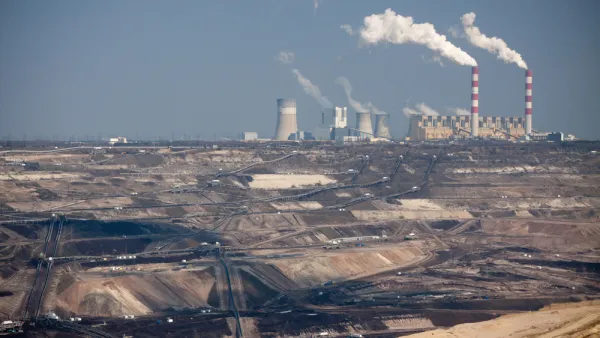Comparing cities versus suburbs in disaster resiliency and recovery.
In an article titled "How Density Makes Us Safer During Natural Disasters" from September 2013, author Vishaan Chakrabarti discusses how density done right can result in cities that fare better than suburban communities during natural disasters such as the East Coast’s Hurricane Sandy. While Chakrabarti concedes the opposite can also be true for inadequately built environments, Dave Hampton (an architect and consultant for the integration of natural and built environments) takes a closer look at this latter concept and the role of regional environments and development.
Offers Hampton, “Understanding how regions currently function and the degrees to which they are robust will lead to better ways of predicting how they will recover after a disaster, leading to greater success in making more distinct areas – cities, towns – ready to weather the next storm.”
Density did not help urban Port Au Prince, Haiti in 2010 when the island was hit by a massive 7.0 earthquake, according to Hampton. Economics, income, and resources play a key role in how areas recover from disaster, he adds.
“An economic powerhouse metropolis in a developed nation, New York has everything going for it. Density, admittedly, concentrates people, power, and capacity. Years of focused prioritization have produced a highly sophisticated set of checks and balances in the form of strong building and health codes, zoning laws, inspections enforcement, and robust support networks of emergency response and public health.”
FULL STORY: Towards Resilient Regions

National Parks Layoffs Will Cause Communities to Lose Billions
Thousands of essential park workers were laid off this week, just before the busy spring break season.

Retro-silient?: America’s First “Eco-burb,” The Woodlands Turns 50
A master-planned community north of Houston offers lessons on green infrastructure and resilient design, but falls short of its founder’s lofty affordability and walkability goals.

Delivering for America Plan Will Downgrade Mail Service in at Least 49.5 Percent of Zip Codes
Republican and Democrat lawmakers criticize the plan for its disproportionate negative impact on rural communities.

Test News Post 1
This is a summary

Test News Headline 46
Test for the image on the front page.

Balancing Bombs and Butterflies: How the National Guard Protects a Rare Species
The National Guard at Fort Indiantown Gap uses GIS technology and land management strategies to balance military training with conservation efforts, ensuring the survival of the rare eastern regal fritillary butterfly.
Urban Design for Planners 1: Software Tools
This six-course series explores essential urban design concepts using open source software and equips planners with the tools they need to participate fully in the urban design process.
Planning for Universal Design
Learn the tools for implementing Universal Design in planning regulations.
EMC Planning Group, Inc.
Planetizen
Planetizen
Mpact (formerly Rail~Volution)
Great Falls Development Authority, Inc.
HUDs Office of Policy Development and Research
NYU Wagner Graduate School of Public Service




























